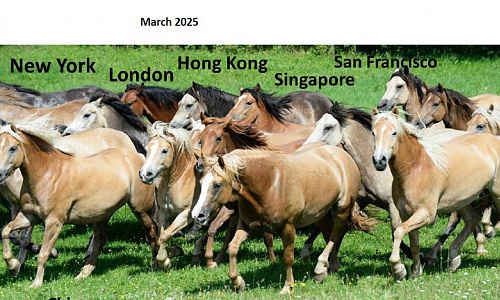
2017 - Insights
 Author:Zheng Yujie, Director, Information and Communications Department
Author:Zheng Yujie, Director, Information and Communications Department
Editor's Note:The signing of the Framework Agreement for Deepening Guangdong-Hong Kong-Macao Cooperation and Promoting the Development of the Bay Area on July 1, 2017 clarified the direction for Guangdong, Hong Kong and Macao to forge an internationally top-notch Bay Area and world-class city cluster. The challenges and positioning changes facing the Guangdong-Hong Kong-Macao Bay Area will greatly influence the region’s next step.
The Guangdong-Hong Kong-Macao Bay Area was initially established to optimize a combination of markets factors across the globe and provide China with a new open platform to integrate resources. In addition, as profits for copycatting technology shrink and bonuses in economic reform dwindle, the Chinese economy desperately needs an innovation-driven growth model. Furthermore, the Bay Area has become the major growth pole in the global economy and primary engine for technological revolution because of the cluster effect. Finally, the Bay Area’s economy helps Hong Kong translate its free economy and lawful society advantages into competitive strengths which will further stimulate the city's economic expansion.
The Guangdong-Hong Kong-Macao Bay Area holds advantages such as high economic capacity, favorable geographic location, outstanding innovation capability, internationalization and a solid foundation in cooperation. However, in the context of the global economy, the biggest challenges to the Guangdong-Hong Kong-Macao Bay Area are fully integrating the cities in the Bay Area, overcoming administrative and systematic barriers, realizing the optimized allocation of resources and improving the operating efficiency of the whole region.
The positioning of the Guangdong-Hong Kong-Macao Bay Area should be considered from the perspectives of the national economic development strategy and its historically significant mission. First, the Area should explore the trade and investment rules and regulations of high standards, develop an open economic system that match the international community, and function as a hub for the “Belt and Road” strategy. Second, the Area should strengthen its global resources allocation capacity and cultivate a competitive innovation center. Third, the Area should fully harness the unique strengths of Hong Kong and Macao and advocate in-depth collaboration between the Special Administrative Regions and the Chinese mainland. Fourth, the Area should forge a world-class city cluster and a powerhouse of economic growth to become a cornerstone in global and regional competition.
The development the Guangdong-Hong Kong-Macao Bay Area should focus on the following four areas. First, as the transportation network improves, a “commute circle” within the city cluster will be established. Second, innovation will be prioritized over the commercialization of scientific technology and the application of research results, and an innovation ecology network should be established that links the Chinese mainland with Hong Kong and Macao. Third, industrial infrastructure will be upgraded and the proportion of high-end services will continue to rise. Finally, a transition from an export-oriented production center to a production and consumption center focusing on trade in both goods and service will occur.
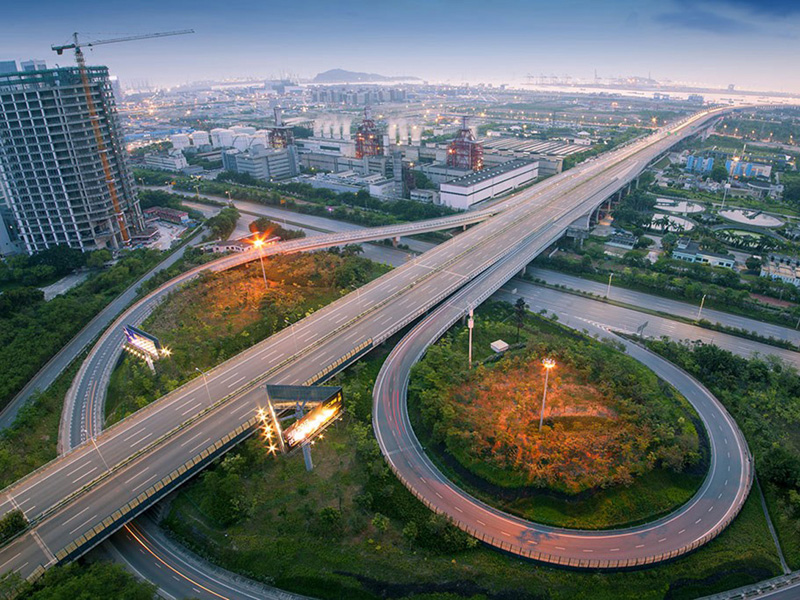 Author: Guo Wanda, Executive Vice President, CDI
Author: Guo Wanda, Executive Vice President, CDI
Editor’s Note: In the midst of the major historic opportunity presented by the establishment of the Guangdong-Hong Kong-Macao Bay Area, Shenzhen should strive to carry out development concept featuring openness, coordination, innovation and low-carbon economy, and actively integrate into the greater Bay Area.
As one of China's earliest and most successful special economic zones in China, Shenzhen is at the forefront of the country's reform and opening-up efforts. After 37 years of expansion, Shenzhen has cemented a certain position within the global industrial production system and it has become one of China's primary cities in foreign economics and trade as a considerable number of its enterprises have “gone abroad”. With the Guangdong-Hong Kong-Macao Bay Area launching, Shenzhen could form a partnership of industry distribution and city functions with other cities in the region.
The difference between the eastern and western parts of the Pearl River Delta has been widening, which greatly hampers the general growth of the area. Cooperation between cities from the eastern and western shores of the Pearl River needs to be improved with limitations in land resources and environment capacity in cities on the eastern shore. Following the construction of key infrastructure facilities like the Hong Kong-Zhuhai-Macao Bridge and the Shenzhen-Zhongshan Corridor, the connectivity between the eastern and western sides of the mouth of the Pearl River will be better. Consequently, Shenzhen will be positioned as a hub in the three city clusters of Shenzhen-Dongguan-Huizhou, Zhuhai-Zhongshan-Jiangmen, and Guangzhou-Foshan-Zhaoqing, and function as a crucial node among the three free trade zones on the two coasts of the mouth of the Pearl River. This will enable Shenzhen to obtain a larger market and a bigger influence within the Bay Area.
The Guangdong-Hong Kong-Macao Bay Area is an important center for science and technology industries, financial services sector, maritime logistics and manufacturing. It is able to fully conduct the innovation ranging from ideas, fund-raising, research and development to production and industrialization. A group of world-leading enterprises has already emerged from Shenzhen including Huawei, Tencent, ZTE, BYD, BGI Genomics and DJI, and the number of PCT international patents applications from these companies account for half of national total. In terms of innovations in policy, industry and system, Shenzhen has made explorations and accumulated experiences that can serve the whole country, for instance, deployments in strategic emerging industries and future industries, establishment of science and technology funds and governmental supports schemes, and implementation of human resources policies such as "Peacock Plan," talents accommodation program, housing and rental subsidy policy and start-up assistance for students studying abroad. These reforms and measures are valuable reference for the rest of the Bay Area.
Guangdong, Hong Kong and Macao have proposed to jointly build a world-class city cluster that is green and hospitable, so as to provide their residents with a clean, comfortable, efficient, and quality living environment and enhance the overall competitiveness of the greater Pearl River Delta. Shenzhen should incorporate low-carbon concept into urban planning, industry policies, construction facilities and transportation, and seek to establish incentive schemes and policy systems conducive to the sustainable development of the greater Bay Area.
 Author: Yang Qiurong, Research Fellow, Center for Hong Kong and Macao Studies
Author: Yang Qiurong, Research Fellow, Center for Hong Kong and Macao Studies
Editor’s Note: Integrating into the Guangdong-Hong Kong-Macao Bay Area and deepening the cooperation with other cities in the Bay Area will boost Hong Kong’s economy.
City clusters are a critical platform enhancing the national competitiveness and regional influence. New York, Tokyo and London are influential cities in the world primarily because of their competitiveness and influence. Integrating into the Guangdong-Hong Kong-Macao city cluster will effectively alleviate risks and challenges troubling Hong Kong today, such as economic imbalance and the lack of innovation. Since the economic exchanges and trade between Mainland China and the rest of world is increasingly closer and the Guangdong-Hong Kong-Macao Bay Area provides a new chance to reposition its function, Hong Kong should leverage on its unique and inherent advantages.
How can Hong Kong effectively integrate into the Guangdong-Hong Kong-Macao Bay Area? Firstly, Hong Kong should capitalize on its advantage in international resources to promote economic opening-up and reasonable industrial distribution within the Guangdong-Hong Kong-Macao Bay Area. Hong Kong should also coordinate with other cities in the Bay Area and conduct innovation in cross-border finance so as to advocate the coordinated development of the Guangdong-Hong Kong-Macao financial sector. Moreover, Hong Kong should strengthen its role as a super-connector in terms of science, technology, logistics, and capital to improve the innovation system of the Bay Area. Hong Kong should, in addition, leverage on its high-end professional services which will be beneficial for the internationalization of enterprises in the Bay Area.
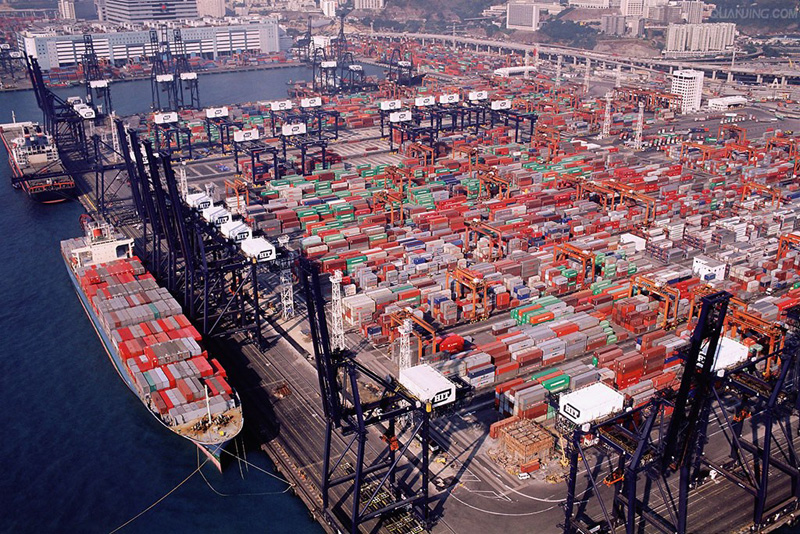 Author: Xie Laifeng, Research Assistant, Center for Hong Kong and Macao Studies
Author: Xie Laifeng, Research Assistant, Center for Hong Kong and Macao Studies
Editor’s Note: Hong Kong has always maintained strong investment and trade relations with the countries of Southeast Asia. Thus, the region is paramount to Hong Kong's participation in the “Belt and Road” initiative. Hong Kong should therefore maximize its inherent advantages and deepen its cooperation with Southeast Asia in a range of fields such as finance, professional services, free trade zones and cultural exchanges.
Hong Kong possesses distinct advantages as the critical maritime hub linking China with the rest of the world. Southeast Asian countries are major trading partners with Hong Kong in terms of commercial services, real estate, finance, manufacturing, and insurance; among Hong Kong's top ten trading partners in 2016, countries in Southeast Asia took up four spots and the summative value of trading with these nations made up more than 10% of the annual total. Hong Kong's exports to ASEAN countries climbed by 8.6% in 2016; in addition, 10% of all trade between the Chinese mainland and Southeast Asia goes through Hong Kong, and this figure is on the rise. Thus, Southeast Asia has a critical position in Hong Kong's foreign economy.
As an international finance and global asset management center, Hong Kong’s abundant high-quality capital, talent, and other resources can provide financing services for Chinese enterprises engaged in infrastructure development, industrial parks, investment, and other capital projects in Southeast Asia. In addition, Hong Kong has garnered global recognition and approval in areas such as law and international arbitration, which are likely to be beneficial for a range of “Belt and Road” projects Southeast Asia.
Hong Kong should deepen its collaboration with Southeast Asia in four principal areas. Initially, Hong Kong should fully capitalize on its advantages in the fields of finance and investment and strive to establish branches of the Asia Investment Bank and Silk Road Fund in order to provide financing for “Belt and Road” projects. Hong Kong should also combine its strengths in professional services with the technical prowess of mainland enterprises to facilitate overseas infrastructure construction and the development of industrial parks in order to jointly expand overseas markets. Hong Kong should, in addition, take advantage of its strengths as a free port, and actively participate in the Regional Comprehensive Economic Partnership (RCEP) in order to cement its key role in the Chinese-Southeast Asian trade network. Finally, Hong Kong should leverage on its geographical proximity to and cultural similarities with Southeast Asia to reinforce its human-level exchanges with the region.
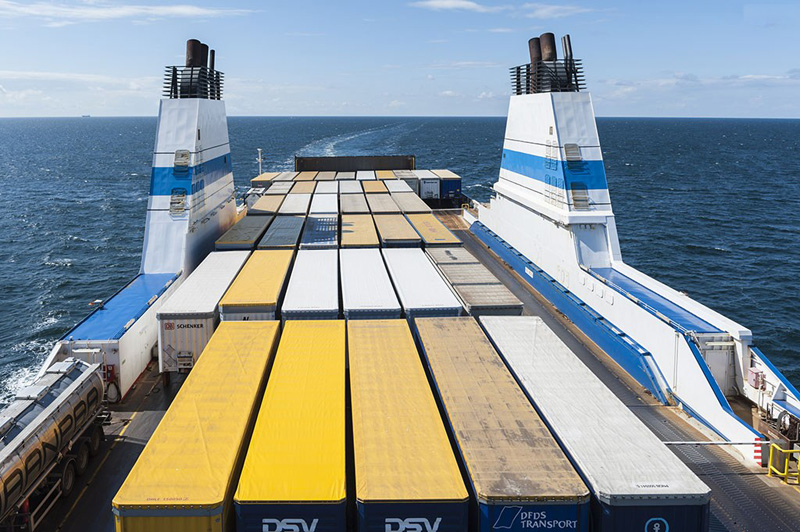 Author: Zhang Guoping, Postdoctoral Researcher, CDI
Author: Zhang Guoping, Postdoctoral Researcher, CDI
Editor’s Note: The proposal of the Amber Route has clearly defined the potential of complementary industries in the future between China and the Nordic countries, and will expand and deepen economic and trade cooperation between China and the Nordic and Arctic region.
Arctic region has weak infrastructure but the enormous potential needs. The construction of Arctic transport will bring the world a more efficient transportation system, and substantial increase for local economic opportunities. The "Belt and Road" initiative has brought a large amount of investment to infrastructure in Nordic and Arctic region. For example, the Silk Road Fund, with a $40 billion investment, has bought 9.9% shares of the Yamal liquefied natural gas project that is worth $27 billion. Meanwhile, three-dimensional traffic pattern project of Finland has begun to form through the "Belt and Road" initiative. The freight trains from China, Zhengzhou (or Xi'an) to Kouvola will be opened which will bring a new branch to the China-Europe freight train service. COSCO has also designed and built a world leading general cargo vessel to regularly sail northward and berth in Finland. In aviation, Finland Airlines currently operates six direct flights to China.
In terms of bilateral economic and trade cooperation, Nordic countries, with a range of traditional competitive industries such as shipping, agriculture, paper making and marine fishery, agree and complement with China that raises requirements in emerging industry development. Emerging advantage areas including green energy, high-end precision instruments, environmental protection, health care and creative design also attract Chinese capital to northern Europe. At present, small and medium-sized enterprises (SMEs) are the main forces in Nordic developed countries to absorb social employment and promote technological innovation, with strong technical superiority and innovative ability. These enterprises are lack of funds and markets in exploiting the overseas market while China's capital and markets just make up such demands. By encouraging China’s financial institutions and environmental technology, bio-pharmaceutical enterprises to issue bonds and test venture investment in Nordic countries, we may explore and promote the SME Development Fund to provide financing, market information sharing and other facilities for SME cooperation between the countries, and give play to the role of Silk Road Fund.
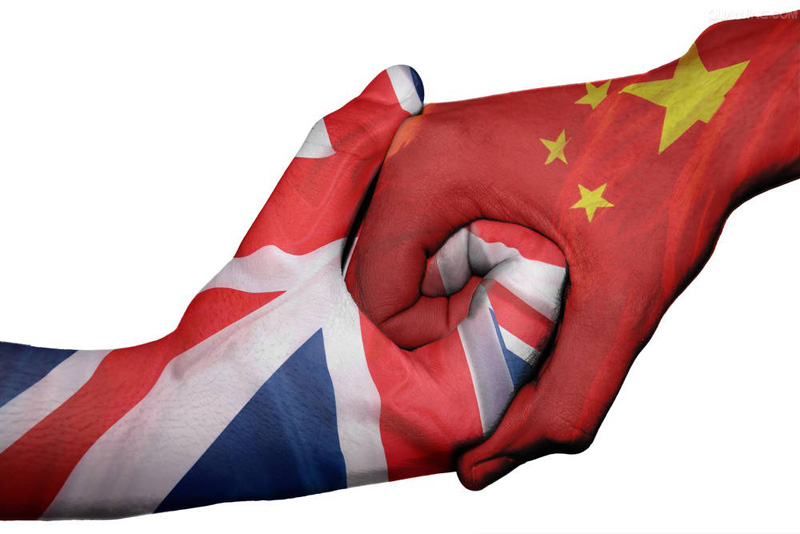 Author: Zhang Guoping, Postdoctoral Researcher, CDI
Author: Zhang Guoping, Postdoctoral Researcher, CDI
Editor’s Note: Britain's participation in the "Belt and Road" Initiative is an important opportunity to open the Chinese domestic market and third country markets. China and Britain are highly complementary in trade structure. By strengthening the docking of development strategies, and promoting mutually beneficial cooperation in trade, investment, finance and energy, they may lay a solid foundation for the "Belt and Road” cooperation.
The "Belt and Road” initiative will create massive RMB denominated assets in overseas areas, and promote the internationalization of RMB. The huge financing requirements for projects along the lines will prompt the issuance of offshore market dim-sum bonds and other types of bonds. London can provide diversified international investors for Chinese enterprises and customers, actively involve global capital markets in the process, and connect capital pools of different currencies, so as to establish a sustainable financing mechanism for the offshore market. For instance, China’s policy banks and international multilateral development agencies may take advantage of offshore markets such as London, and increase issuance of long-term bonds related to the "Belt and Road", to improve the yield curve, expand the development of the secondary offshore bond market, and improve the “Belt and Road’s" long-term financing mechanism.
In terms of Britain, the Northern Economic Growth Area strategy can completely dock the "Belt and Road” initiative, to share China’s capital, infrastructure construction technology and experience, and realize in-depth complementation between the two countries with regards to cooperation and investment. Northern England has become increasingly important to the economy of the entire UK. Many large multinational groups are investing for development there. It will quickly become a global innovation enterprise investment center. China's development path and infrastructure experience may provide high-speed rail technology and finance, and stimulate Northern England’s economic vitality.
In the field of cooperation with a third country, British companies may complement their Chinese counterparts with technological advantages on international infrastructure projects. They may also carry out international cooperation in project management, financing, design, planning and environmental protection. Britain could serve as a support point at the western end of the "Belt and Road" with its expertise in professional services. The advantages of engineering design and consulting, financial services, and legal services will provide significant opportunities for the United Kingdom’s professional services to participate in the infrastructure projects.
Following Brexit, Britain’s export situation has worsened. Accelerating the development and operation of China-Europe freight trains, and strengthening Britain's engagement with other global trading partners, will help British products to go global.
 Author: Hu Zhenyu, Director, Department of Sustainable Development and Maritime Economy, CDI, Zhou Yuyi, Research Associate, Department of Sustainable Development and Maritime Economy, CDI
Author: Hu Zhenyu, Director, Department of Sustainable Development and Maritime Economy, CDI, Zhou Yuyi, Research Associate, Department of Sustainable Development and Maritime Economy, CDI
Editor’s Note: The Pacific Island countries are faced with significant environment pressure and pressing needs for development at present. While growth in global trade has slowed down, development in trading between China and the Pacific Island countries has developed rapidly. Thus, China should strengthen research on the Pacific Island countries so as to promote extensive, efficient and pragmatic collaborations with them.
The Pacific Islands, including 27 nations and regions in the Pacific Ocean except Australia and New Zealand, is a part of the 21st Century Maritime Silk Road. Affected by natural disasters and increasing temperature, the Pacific Islands are exposed to significant environmental pressure and pressing needs for development. China's proposal of establishing a “community of human shared destiny” is well-received by the island nations.
Due to disparity in resources, uneven developments exist among the Pacific Island countries. Although Papua New Guinea holds comparative advantages in territory size, total economic output and natural resources, its GDP per capita remains at a relatively low level due to outdated technology and equipment. With an abundance of tourism resources and accessible transportation, Fiji has emerged as a key tourism spot in the Pacific. Other island countries such as Niue, Cook Islands and Palau also post GDP per capita above USD 10,000.
Though growth in global trade is currently bogged down in a slump, trading between China and the Pacific Islands has shifted into high gear, with total volume of import and export surging from USD 4.3 billion to USD 7.5 billion, a jump of 73% and an annual growth rate of approximately 15%. Main exports goods to the island countries include machineries, electronics, automobiles, ships and light industrial products, while items imported to China from the Pacific Islands are comprised mainly of fish products and natural resources.
China's primary trade partners in the Pacific Islands region are Marshall Islands, Papua New Guinea and Solomon Islands. In 2015, trade volume between China and the three major Pacific trading partners amounted to USD 6.7 billion, accounting for over 90% of trade between China and all Pacific Islands.
In addition, due to Fiji's strategic importance, its trade relations with China has blossomed and Fiji is now China's number four trade partner in the Pacific Islands region. Since the proposing of the Maritime Silk Road concept, economic and trade development between China and the Pacific Islands has been climbing by leaps and bounds.
Yet, obstacles are in the way of deeper cooperation between China and the Pacific Islands. It would be necessary for China to conduct further research on the politics, economy and culture of the Pacific Island countries, so as to promote extensive, efficient and pragmatic collaborations with them.

Author: Fan Gang, President, CDI
Editor’s Note: Although the real estate market has gone through a tortuous development process, there still remains a huge potential. So how can the real estate industry realize sound development?
Why is there high housing price? Because there is high price of land auction and the land price is derived from the real estate price. The expected housing price in the area in the future is higher than the present will lead to higher land prices. If the government does not interfere and lets the market continue to overheat, it may lead to a crisis. So how can the real estate industry realize sound development?
Firstly, in terms of demand, an automatic stabilizer, namely, house property tax is needed. If there is an automatic stabilizer for the demand side, administrative measures are not necessary since taxes and leverage can automatically play their roles in stabilizing the real estate industry.
Secondly, in terms of supply, correct the deviation of the urbanization strategy. Current policies mainly focus on encouraging the development of small towns and cities and limiting the development of large cities and it causes excessive land supply in small cities. However, over the past three decades, most of the population migrated to large cities, indicating that our land policies have not kept pace with the law of population migration and urban development.
Thirdly, to solve the real estate problem from the root is to solve the issues of strategies and systems rather than to ascribe the real estate problem to monetary issues. We should change some of the past strategies and policies and gradually withdraw administrative measures to promote the steady and healthy development of the real estate market.
 Author: Wang Guowen, Director, Department of Logistics and Supply Chain Management, Zhang Yiju, Research Associate, Department of Logistics and Supply Chain Management
Author: Wang Guowen, Director, Department of Logistics and Supply Chain Management, Zhang Yiju, Research Associate, Department of Logistics and Supply Chain Management
Editor’s Note: The mutual recognition and alignment of the standards for product and services at national strategic level and in the form of bilateral agreements is crucial to ensuring successful construction, implementation and operation of China-Belarus Industrial Park. As they participate in the Belt & Road projects, Chinese enterprises should participate in the formulation of policies, regulations, standards and processes in the host country of the projects, and actively promote the alignment of China’s standards with the local standards in the host country.
In recent years, major projects of China-Belarus cooperation have been pushed forward in the process of Belt & Road construction. China-Belarus Industrial Park is a signature project in China and Belarus’ joint effort to build the Silk Road economic belt. According to planning objectives, China-Belarus Industrial Park will attract over 200 high-tech enterprises and create 120 thousand jobs, as it is integrated into a new international airport city with a population of 200 thousand.
The major projects of China-Belarus cooperation have won policy support from the government of Belarus, providing favorable conditions for China-Belarus cooperation. However, the lack of mutual recognition and alignment of China’s standards and the local ones in Belarus has hindered the development of cooperation projects between the two countries. The lengthy certification process has severely affected the schedule. Moreover, the lack of alignment in service standards between China and Belarus poses a potential policy risk, potentially reducing the efficiency of construction and operation of the park. In addition, the lack of mutual recognition and alignment in management processes has added unnecessary daily operation costs for Chinese businesses.
The practical experience of China-Belarus Industrial Park and other cooperation projects testify to the necessity of standard alignment between China and the host country at a national strategic level in a bid to raise the overall efficiency. Here are three proposals: first, incorporate the mutual recognition of standards into bilateral cooperation, and sign detailed bilateral agreements to fully align China’s standards and the local standards. Second, conduct research on the development strategies, laws and regulations, standard systems and access management systems of countries and regions along the belt and road, so as to provide intellectual support for Chinese businesses going global. Third, encourage Chinese businesses and institutions to participate in the drafting of international standards, and work towards higher levels of international standardization.

Author: Yu Zongliang, Research Assistant, Department of Regional Development Planning, CDI
Editor’s Note: China is Sri Lanka’s largest trading partner and the most important investor. The Sri Lanka-China Industrial Zone will become an important platform for Chinese enterprises going global as well as the industrial capacity cooperation between the two countries. However, the business environment of Sri Lanka needs further improvement, for which it is important for China and Sri Lanka to enhance communication on legal policies and improve environment for investors to jointly promote the development of the Sri Lanka-China Industrial Zone.
Sri Lanka occupies a strategic position in South Asia and has a liberalized economic system. Sri Lanka’s program for economic development prioritizes export as a national strategy in developing an export-oriented and import substituting economy in a bid to build Sri Lanka into an economic hub along the modern Silk Road in Asia. However, Sri Lanka remains an agricultural country with weak industrial foundation, unbalanced trade mix, and slow development of industrial zones.
At present, 16 industrial zones can be found in Sri Lanka, which are mainly focused on textile and clothing, along with other industries such as food processing, chemicals, automobile, IT, and education. Currently, Sri Lanka's industrial zones face a range of problems including limited space, small scale of businesses, limited industrial combined effect, and insufficient capacity of government in providing public services. Overall, Sri Lanka's industrial zones need further improvement in business environment and higher levels of economic development.
With the economic and trade ties between China and Sri Lanka becoming ever closer, China has seen fast increases in its investment to Sri Lanka, with Chinese companies deeply participating in the construction of sea ports, air ports, power stations and other important infrastructures. China became Sri Lanka’s biggest trading partner and source of imports in 2016. China should further enhance communication with Sri Lanka at a legal level, and help Sri Lanka to constantly improve the business environment of its industrial zones. First, China and Sri Lanka should sign a treaty of international legal significance, which covers free trade talks on trade in goods, trade in services, investment, economic and technological cooperation, etc. Second, Sri Lanka should introduce top legislation to regulate industrial zone development, further strengthen guarantee mechanism to safeguard the rights of investors. Third, Sri Lanka should put in place bilateral or multilateral national economic and diplomatic mechanisms with its trading partners for effective communication and coordination, and create high-level dialogue mechanisms for industrial zone development.
More...
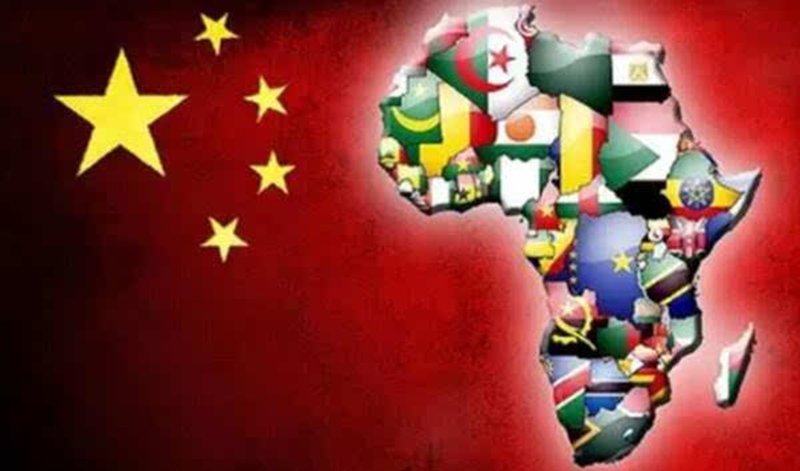 Author: Huang Rui, Postdoctoral Researcher, CDI
Author: Huang Rui, Postdoctoral Researcher, CDI
Editor’s Note: With the concept of mutual benefit and win-win cooperation in the "Belt and Road" initiative, the cooperation between China and Africa in production capacity and equipment manufacturing has developed rapidly following the rules of market. Meanwhile, it has also improved Africa's infrastructure and industrial systems.
Since the implementation of the reform and opening up policy in 1978, China has experienced rapid development as it makes full use of its labor force, resources and market advantages in the past 30 years. With the optimization and upgrading of China's industries, China’s industry has begun to move on to oversea. Africa has gradually become a key destination of China's capital and technology exports. For the further Sino-African cooperation under the "Belt and Road" initiative, China should follow the rules of industry transfer and focus on investment economics and social efficiency.
In recent years, China has built a number of railways and industrial parks in Africa through the cooperation between international capacity and equipment manufacturing. The railways China builds in Africa connect the continent’s ports and resource-rich inland cities. Such a “railway-port” mode provides Africa with advanced transportation basis for industrial development and stimulates the export of China's steel, locomotives, cement and communications equipment. The overseas economic and trade cooperation zones that China has established in Africa are all based in the cities along the railways built by China. They are solid industrial bases for the host countries, meanwhile; further the development of Sino-African capacity cooperation and China’s industrial transfer.
With the development of Sino-African cooperation, China's industrial layout in Africa has gradually unveiled with the combination of railways, ports and industrial parks. There is still room for improvement. First of all, to ensure the sustainability of the "Belt and Road” projects, we should utilize the railway network to prop up the industrial network. Secondly, we should promote the smooth development of industries transferred from China to Africa. Thirdly, as more enterprises settle down in overseas economic and trade zones, we should gradually enhance the combined effect among enterprises for the cooperation of industry chains.
 Author: Zeng Manyuan, Research Assistant, Department of Regional Development Planning, CDI Wang Zhen, Research Associate, Department of Regional Development Planning, CDI
Author: Zeng Manyuan, Research Assistant, Department of Regional Development Planning, CDI Wang Zhen, Research Associate, Department of Regional Development Planning, CDI
Editor’s Note: Countries along the "Belt and Road" in the Middle East regards the establishment of special economic zones as a viable path to mitigating troubles in the petroleum sector and realizing economic transformation. The successful model and experiences of the Shenzhen Special Economic Zone, has been highly regarded by the government of Kuwait.
Production capacity and mutual investments are priorities in the course of the joint establishment of the "Belt and Road" with special economic zones becoming an effective platform.
First of all, the establishment of special economic zones will function as a vital platform for Sino-Kuwaiti joint efforts in building the "Belt and Road". Kuwait has always been a steadfast supporter for the “Belt and Road” initiative. In order to alleviate current predicament of the oil industry and achieve economic transformation, the government of Kuwait has made plans for the projects of Silk City and five-island comprehensive development zones with an intention to leverage China's advanced experiences in building special development zones. Furthermore, the integrated management model for special economic zones is going to be a paramount subject for Kuwait to study from. Strategic planning, rules and policies, investment and financing, development and construction, and operation management are all pivotal to the overall construction and planning of the special economic zones. Rules and policies related to the general operation of special economic zones will directly affect the zone's investment and industrialization.
Last but not least, the life-cyclic management of special economic zones will facilitate Sino-Kuwaiti joint efforts in building the "Belt and Road". The Kuwaiti government needs to ensure that the national development strategy is supportive for the establishment of special economic zones and to stipulate rules and policies which will improve the investment environment of the special economic zones. The objectivity and rationality of the special economic zones should be considered as the top priority in the early stage of the planning. What’s more, industries featured by the Sino-Kuwaiti production capacity cooperation should also be arranged in the special economic zone in the phase of attracting investment. Kuwait needs to improve the government efficiency and management in the special economic zones based on the overall planning so as to optimize the investment environment of the zones.
Author: Fan Gang, President of CDI
Editor’s Note: Professor Fan Gang had a television exclusive interview with CBN on a series of macroeconomic issues including global market, monetary policy, and foreign exchange rate. Following are edited excerpts from the interview:
 “Loose monetary policy cannot be used to control financial risks.”
“Loose monetary policy cannot be used to control financial risks.”
Bursting credit risks have triggered heated debates since March. Given current supply-demand relationship, a prudent monetary policy shall be in place. Default becomes a natural thing due to high leverage and severe supervision caused by overheated economy. Financial risks need to be controlled, yet a loose monetary policy is not an option.
“Deposit reserve ratio reduction is not equivalent to monetary policy easing.”
At present, China’s foreign exchange reserves have been cut down. Therefore, reserve ratio has to be lowered to maintain quantity of money, which is a neutral rather than loose monetary policy.
“It is not about whether to maintain FX reserves or exchange rate.”
There is no need to protect FX reserves as China's foreign exchange reserves dropped below $3 trillion due to RMB internationalization progress like yuan’s inclusion in SDR basket and the fact that United States treasury bonds are low in efficiency and returns. Meanwhile, the renminbi will move towards a more flexible exchange rate rather than a fixed one that is pegged to the US dollar. Therefore, maintaining exchange rate is just groundless talk. Overnight foreign exchange reserve fluctuation is unwanted for any country. Certain measures will be taken to ensure stable transition in exchange rate or FX reserves.
“Be prepared for short-term appreciation and long-term depreciation of the US dollar.”
After Trump came to power, Sino-US relations are filled with "uncertainties", but several things are clear. First, Trump can no longer accuse China of currency manipulation; second, the Trump administration will increase trade frictions between the two countries, but will not launch a full-fledged trade war against China; third, Trump will reinforce public opinions through tax cuts and infrastructure investment growth. As a result, USD will appreciate in the short run with foreign investments attracted to the US and the prices of crude oil and staple commodities at the international market will be on the rise at the same time. America’s social security expenditure will continue to grow and its deficit and inflation will see a strong uptrend as a consequence of Trump’s tax cuts and intensified infrastructure investment. All this is likely to lead to depreciation of the US dollar.
Author: Stephen Olson, special contribution to CDI. Research Fellow at the Hinrich Foundation
Editor’s Note: There are four main issues regarding trade policy and the Trump administration to address: process and power, the key people on the Trump trade team and their perspective, recent policy developments and likely scenarios.
 There are four main issues regarding trade policy and the Trump administration to address. What authority does President Trump actually have to implement his trade agenda? Who are the key people on the Trump trade team and what is their perspective on international trade? How should we interpret several recent policy developments? What are some of the most likely potential scenarios moving forward?
There are four main issues regarding trade policy and the Trump administration to address. What authority does President Trump actually have to implement his trade agenda? Who are the key people on the Trump trade team and what is their perspective on international trade? How should we interpret several recent policy developments? What are some of the most likely potential scenarios moving forward?
Process and power
As a candidate and in the early days of his administration, President Trump made a number of very provocative policy pronouncements about what he would like to do in the area of international trade. This raises the obvious question: does he actually have the authority to do the things that he is talking about? The short answer is: yes, he does.
The US Constitution provides authority to manage international trade to the US Congress. However, over the years the US Congress has delegated a significant amount of authority back to the president. Section 301 of the Trade Act of 1974 gives the president the authority to take retaliatory action, such as tariffs, if he determines that US commercial interests are being damaged by unfair or discriminatory trade practices from foreign countries.
Although President Trump doesn’t have unlimited power when it comes to international trade, he does have very substantial power to implement most— if not all— of what he has talked about on his trade agenda.
People and perspectives
There are several critical individuals to discuss on the Trump trade team: Wilbur Ross, Commerce Secretary; Robert Lighthizer, nominated US Trade Representative; Peter Navarro, head of the National Trade Council, and Gary Cohn, Director of the National Economic Council.
Wilbur Ross is a very successful private equity investor with a lot of experience in China and very clear-cut viewpoints on China. During his Senate confirmation hearings, Ross expressed the viewpoint that China is the most protectionist large country in the world and believes that the United States should only open its borders to those countries that “play by the rules”.
Robert Lighthizer is the well-qualified nominee with real government experience for US Trade Representative. From a philosophical point of view, he feels that the United States has outdated, over-idealized notions of free trade while the rest of the world isn’t playing by the same rules. He certainly advocates a more aggressive stance on China.
Peter Navarro serves as the head of the National Trade Council—a newly created position in the White House. Navarro is most famous, or infamous, for a book and subsequent documentary titled “Death by China”, which does not provide a favorable look at China’s trade policies. He also advocates a much tougher, aggressive trade stance vis-a-vis China.
Gary Cohn is the head of the National Economic Council. He holds more traditional pro-free trade viewpoints, and has proven to be surprisingly influential in the Trump White House. He can be expected to attempt to moderate some of the harder-line trade stances taken by his colleagues.
In general, these gentlemen— who will form the core group of the Trump administration on international trade— are deeply experienced and have very well developed viewpoints on international trade.
Recent policy developments
President Trump has recently signed a number of Executive Orders (EO) related to international trade. These EOs call for a tighter enforcement of AD/CVD cases, a review of countries with large trade surpluses with the US, an investigation into steel imports, and a review of Buy America provisions in trade agreements. The main themes from the trade policy agenda submitted this year by the Trump Administration are: a seeming willingness to disregard WTO rulings, stricter enforcement of trade laws, and a greater use of leverage in negotiating trade agreements.
Potential scenarios
One of the first scenarios from the Trump administration is a much different approach to trade agreements. Under the Obama administration and in most administrations in the past 30 years, geostrategic considerations have played a very high role in the conduct of US trade policy. Case and point is the Trans-Pacific Partnership (TPP). This will change under the Trump administration. Geostrategic considerations will be significantly downgraded and perhaps even thrown out the window. Trade policy and trade agreements will now be conducted on the basis of whether they meet the following three criteria: they increase US growth rates, reduce the US trade deficit and strengthen the US manufacturing sector. The focus will be on economics. The Trump administration is also likely to put their emphasis on bilateral negotiations rather than multilateral or regional agreements for the reasons of greater degree of leverage and higher common denominator approach in bilateral negotiations.
The second potential scenario from the Trump administration is a more aggressive push back against perceived unfair trade practices. The first is an increase in antidumping and countervailing duties cases filed against trading partners. The second is levying punitive tariffs during the course of trades. The third is considering currency manipulation as an unfair export subsidy which would further result in the imposition of tariffs. Finally, the Committee on Foreign Investment in the United States (CFIUS) already has pieces of draft legislation circulating around Capitol Hill that would toughen the enforcement and monitoring of investments moving into the United States.
For the third potential scenario, it is extremely likely that there will be a renegotiation of the North American Free Trade Agreement (NAFTA). Some of the most likely issues to be negotiated include, first and foremost, tighter rules of origin under the Trump administration. Considering that government procurement provisions in NAFTA circumscribe the ability of governments to give preferences to domestic suppliers. Thus, the Trump administration will likely be looking to weaken the government procurement provisions in NAFTA so it has more latitude to implement “Buy American, Hire American” policies. The other area is wages, Wage issues, along with broader labor and environmental issues are likely to come up in a renegotiation of NAFTA.
Renegotiating NAFTA is actually a very healthy exercise. The NAFTA agreement is 23-years-old, so it makes sense to review what works well, what doesn’t work well, and see if there are things to improve or update. The likelihood is that the three countries will be able to agree to a very reasonable set of adjustments that result in an improved NAFTA moving forward.
The fourth potential scenario centers on US-China relations. While volatility is certainly not a foregone conclusion, it is a possibility. If China and the US have trade conflicts, what are some of the tools China has in its toolbox to strike back against the United States?
Antidumping and countervailing duties are probably tool number one. China has learned very well from both the US and the European Union by constructing an antidumping and countervailing duty law. This law is highly effective and capable of inflicting serious damage. If a spate of cases is filed by the US against China, it is likely to see China filing a number of antidumping or countervailing duty cases against the United States, which would have very specific economic impact.
The other tool that China has to respond with would be using its regulatory regime to tighten the screws on US businesses doing business in China. The anti-monopoly law could be used, particularly in the areas of pharmaceuticals, smart manufacturing, and medical devices.
Another thing that the Chinese government can do is to use its influence in the economy—through state-owned enterprises—to change purchasing decisions. For example, a number of very expensive airplane orders that previously would have gone to Boeing could now go to Airbus.
The final item, depending on what action the US takes, is the Chinese government could be on firm ground to raise dispute settlements in the WTO. Of course, each case would need to be decided on its own merits, but that is a possibility.
Trade policy under the Trump administration is going to diverge very sharply from a number of the fundamental principles that has guided US trade policy for 30 years. At this point, it is entirely premature to speculate what the results of this new approach to trade will be. But for whatever it is worth, keep your seatbelts fastened because we could be hitting a period of turbulence.

